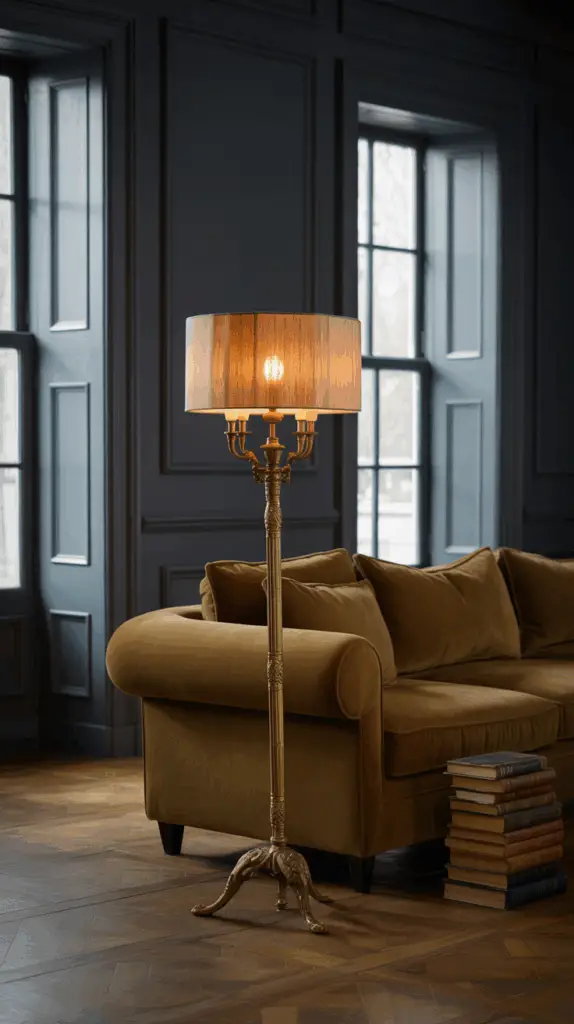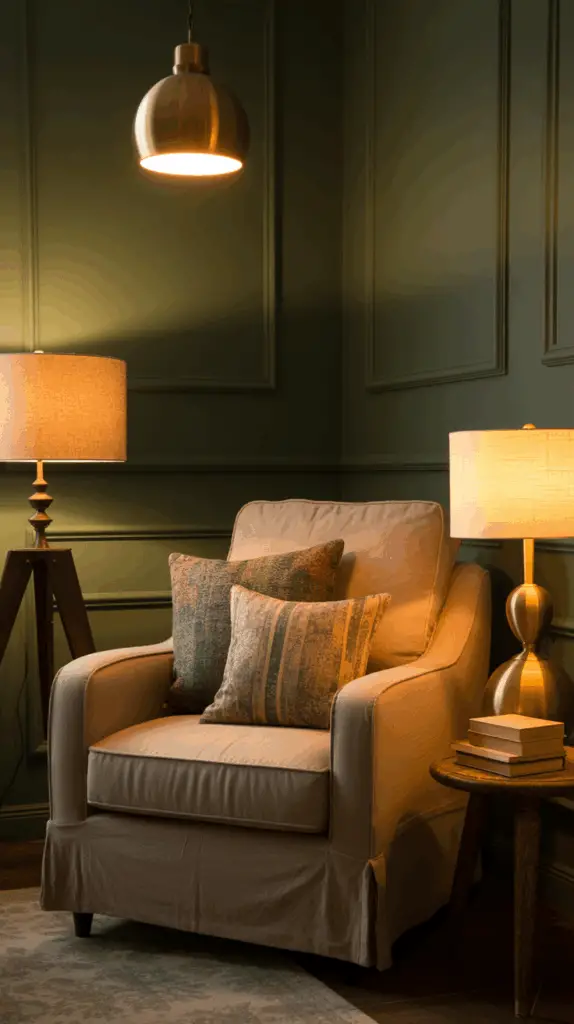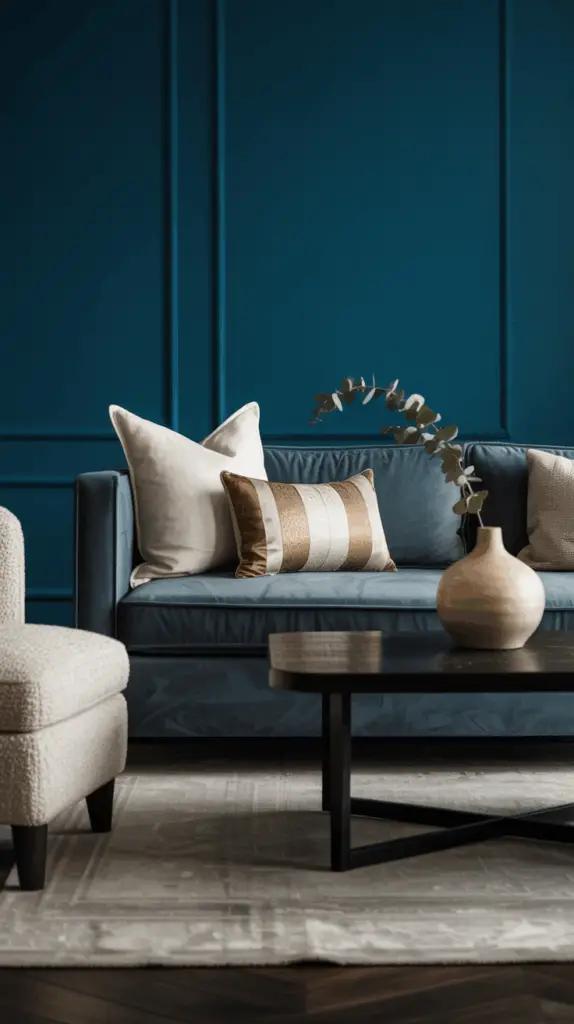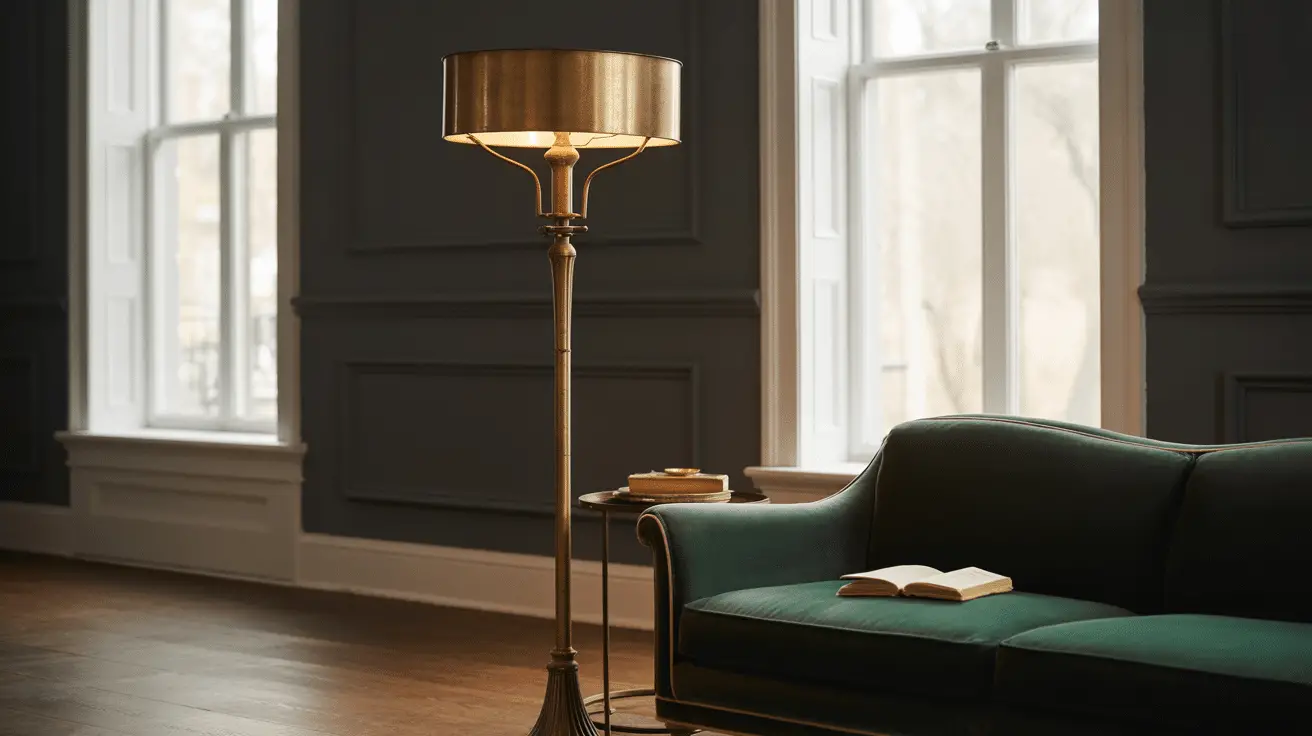How to Style Dark Living Room Ideas with Dramatic Paint for a Bold and Sophisticated Space
Table of Contents
How to Style Dark Living Room Ideas with Dramatic Paint
Once avoided for fear of making a space feel small or gloomy, dark paint is now a design power move. From moody navy walls to rich charcoal or deep emerald, bold tones bring elegance, depth, and instant personality to any living room. According to a recent interior trend report by Pinterest, searches for “dark cozy living rooms” and “moody wall colors” have skyrocketed—proof that homeowners are embracing bold, dramatic paint like never before.
But going dark isn’t just about picking the deepest swatch on the paint deck. It requires thoughtful styling to strike the perfect balance between drama and comfort. Done well, a dark living room can feel like a sophisticated retreat—inviting, cocooning, and full of character. Done poorly, it can fall flat or overwhelm.
This guide breaks down how to confidently use dark paint in your living room and style around it with intention. From choosing the right shade and lighting to selecting furniture, textures, and contrast points, you’ll discover ways to transform even the simplest space into a statement-worthy sanctuary. Whether you’re all-in on obsidian walls or just curious about dipping into moody hues, this is your roadmap to embracing the dark side—beautifully.
Choose the Right Dark Paint Color for Your Space
Not all dark colors are created equal. When styling a living room with dramatic paint, choosing the right shade is the foundation of success. Factors like room size, lighting, and the existing architectural elements should influence your selection.
Cooler tones like charcoal, deep navy, and forest green evoke a serene, contemporary mood. Warmer darks—think chocolate brown, maroon, or oxblood—add richness and traditional coziness. Matte finishes tend to absorb light and create a velvety effect, while satin or eggshell finishes reflect just enough to highlight architectural details.
It’s important to test your chosen color in multiple lighting conditions. Natural daylight can soften or intensify a color’s undertone, while artificial lighting at night can completely alter its appearance. Paint large swatches on your walls and observe how the color shifts throughout the day.
Pair your paint with trim in a high-contrast white for a crisp effect, or go tone-on-tone with darker moldings and ceilings for an enveloping, gallery-like space.
Dark Paint Color Guide Table
| Color Name | Undertone | Best For | Styling Tip |
| Charcoal Gray | Cool | Modern or industrial spaces | Pair with brushed metal accents |
| Deep Navy | Cool | Coastal or transitional styles | Contrast with warm wood furniture |
| Forest Green | Neutral/Cool | Nature-inspired rooms | Add leather or rattan for texture |
| Oxblood | Warm | Vintage or eclectic spaces | Mix with velvet or antique brass |
| Chocolate Brown | Warm | Rustic or traditional homes | Use with ivory textiles and warm lighting |

Balance Darkness with Strategic Lighting
Lighting plays a crucial role in making a dark-painted living room feel inviting rather than oppressive. When natural light is limited or the paint absorbs light, layering artificial sources is key to adding warmth and definition.
Start with overhead lighting. Consider a statement chandelier, sculptural pendant, or recessed ceiling lights that offer both ambient and directional options. Then build in task lighting with floor and table lamps near seating areas or reading nooks. The goal is to have light at multiple levels to create dimension.
Warm-toned bulbs (2700K–3000K) are ideal—they soften dark walls and give the space a cozy glow. Avoid harsh white light, which can clash with dramatic tones and feel clinical.
Don’t forget accent lighting. Wall sconces, under-shelf LEDs, or uplights aimed at art and plants can highlight features and break up the darkness. A well-lit dark room glows rather than disappears.
Lighting Layer Breakdown Table
| Lighting Type | Function | Design Tips |
| Overhead | General illumination | Choose warm bulbs and diffusers for softness |
| Floor Lamps | Task or corner enhancement | Arc lamps work well with deep seating areas |
| Table Lamps | Local glow for surfaces | Opt for warm brass, ceramic, or textured bases |
| Accent/Spotlights | Highlight artwork or texture | Place near bookshelves, alcoves, or feature walls |

Layer Textures to Add Warmth and Depth
When working with dark walls, texture becomes your best styling tool. Rich colors can flatten a space visually if there aren’t enough tactile contrasts. The solution? Layer textures that create interest and warmth, from fabrics to finishes.
Start with soft furnishings. Velvet, boucle, wool, and linen work beautifully against dark backdrops, providing cozy, touchable depth. A plush area rug anchors the space and contrasts with hardwood or tile floors.
Incorporate hard textures, too—such as raw wood, natural stone, or rattan—to add structure and visual relief. A weathered oak coffee table or a cane-front cabinet can break up the density of a dark wall.
Don’t forget reflective elements. Mirrors, metallic frames, and glazed ceramics catch and bounce light, which helps animate the space. Think of texture not just as contrast but as a storytelling layer that elevates your design.
Texture Styling Ideas Table
| Texture Type | Material Example | How It Complements Dark Paint |
| Soft Upholstery | Velvet, linen, boucle | Adds luxury and comfort |
| Natural Elements | Wood, rattan, stone | Warms up deep tones |
| Reflective Surfaces | Brass, glass, mirror | Enhances light play |
| Layered Rugs | Wool, jute, faux fur | Adds softness and defines zones |
| Accent Textiles | Knit throws, woven pillows | Brings movement and visual interest |

Use Contrast and Color Accents to Create Visual Interest
A dark living room doesn’t have to mean monochrome. In fact, introducing the right contrast can make your dark paint pop and prevent the space from feeling too heavy. The key is intentionality—every contrasting element should enhance the mood.
One of the simplest ways to introduce contrast is through light furniture. Cream or camel-colored sofas, pale wood finishes, or ivory drapery offer beautiful balance against navy or charcoal walls. Bright artwork or gallery walls can add bold punctuation.
Color accents are another powerful tool. Jewel tones like amber, sapphire, or emerald enhance richness, while softer hues like blush, clay, or dusty blue lend subtle vibrance. Introduce these shades through art, textiles, ceramics, or plants.
Be mindful of balance. Use one or two accent tones consistently throughout the room for cohesion. Scatter them across textiles, objects, and artwork for a harmonious blend.
Contrast and Accent Styling Table
| Element | Contrast Strategy | Suggested Use |
| Light Furniture | Bright against dark walls | Sofa, armchairs, media console |
| Metallic Accents | Shine and reflectivity | Side tables, lighting, photo frames |
| Colorful Art | Punctuation of brightness | Oversized canvases or gallery wall |
| Plant Life | Organic lightness | Potted floor plants or hanging greenery |
| Accent Pillows | Pops of color or pattern | Layer with neutrals and textures |
Define Zones with Area Rugs and Architectural Cues
In larger living rooms, dark paint can feel expansive—almost too much. Defining functional zones helps anchor your furniture and create a sense of intentionality. This is especially useful in open-concept layouts or long, narrow rooms.
Area rugs are the most effective way to delineate a seating zone. A rug should be large enough to at least touch the front legs of your seating pieces, creating a unified area within the room. Choose rugs with subtle patterns or warm neutrals to balance the drama of the walls.
Use architectural features like built-in shelves, archways, ceiling beams, or paint changes to separate different zones without compromising cohesion. Even a slightly darker paint on the far wall can suggest depth and function.
In small spaces, this technique also helps define corners for reading nooks, console displays, or plant groupings—making the room feel layered, not cramped.
Zone Styling Table
| Zone Type | Design Tools Used | Why It Works |
| Main Seating Area | Large rug, lighting cluster | Creates visual focus and intimacy |
| Reading Nook | Floor lamp, small rug, armchair | Offers quiet utility and charm |
| Media Wall | Dark accent wall, shelving unit | Anchors the space and hides screen glow |
| Entry/Transition | Console table, framed art | Signals entry point, adds balance |
Conclusion
Styling a dark living room with dramatic paint is about more than bold color—it’s about curating atmosphere. Through the right paint choice, thoughtful lighting, layered textures, contrast elements, and defined zones, you can transform a simple room into a moody, inviting retreat full of depth and personality.
Dark colors invite intimacy and elegance, making the living room feel both modern and timeless. With a balanced approach, your space won’t just be dark—it will be deeply beautiful, endlessly comforting, and uniquely yours.

